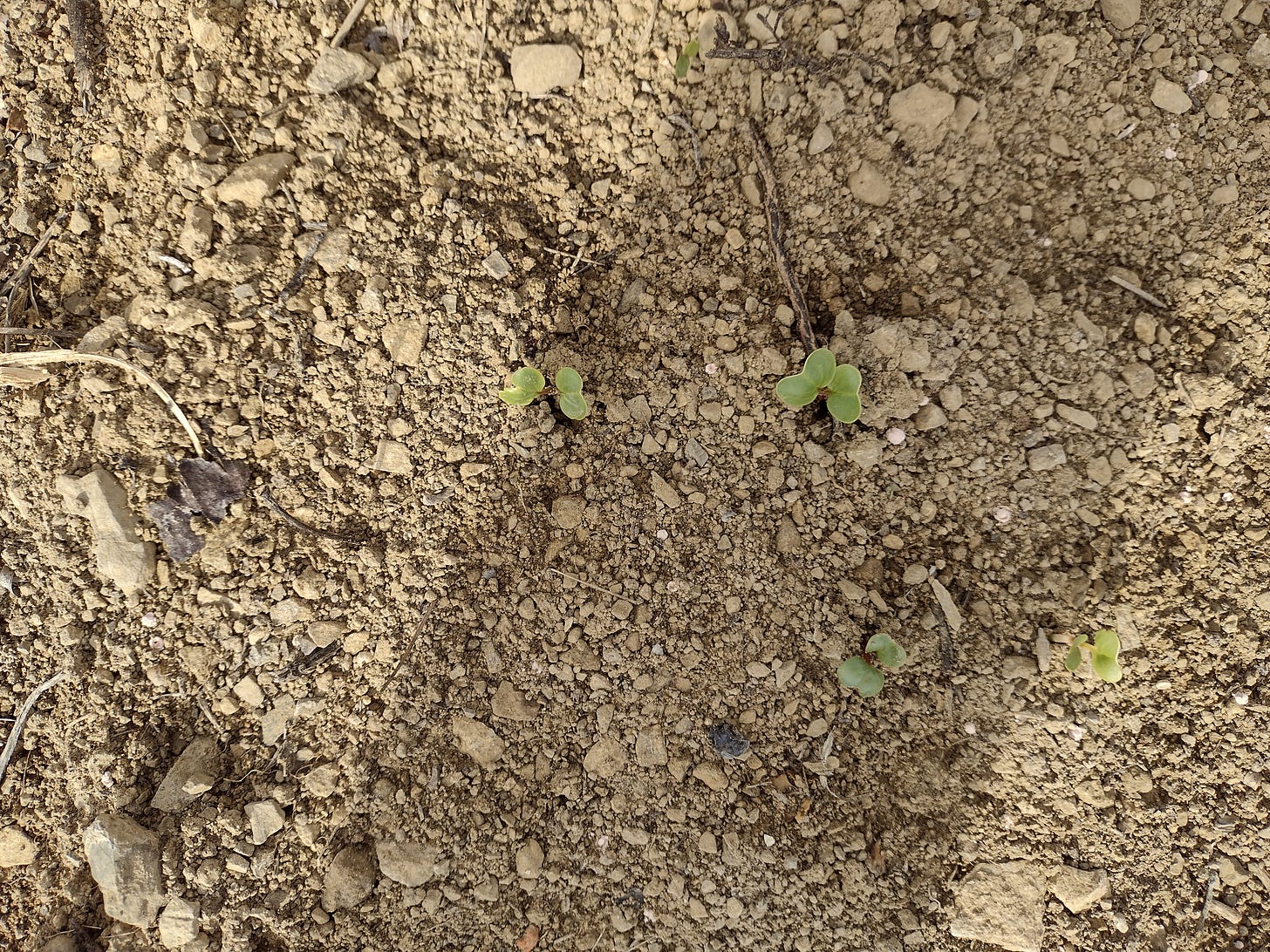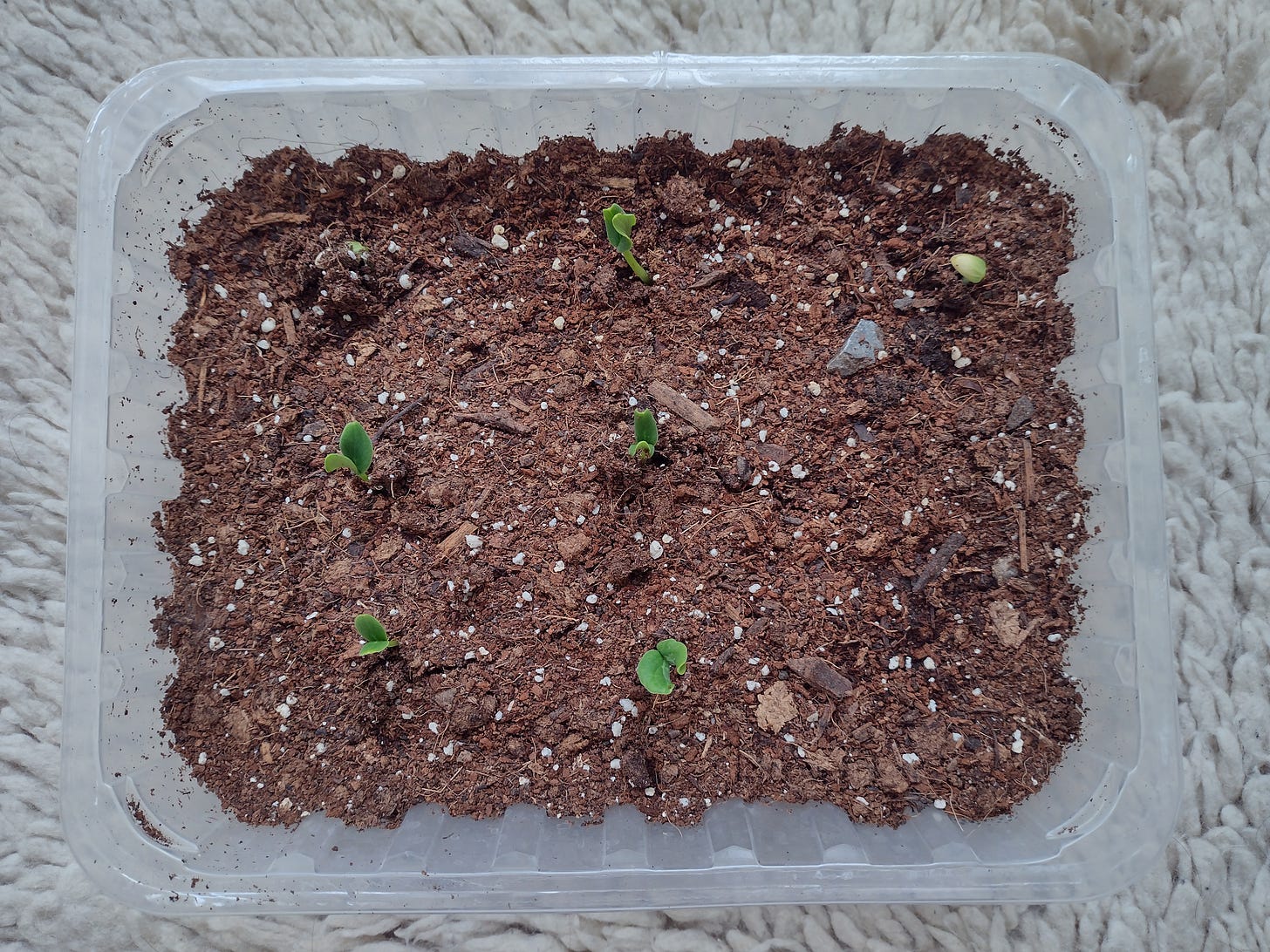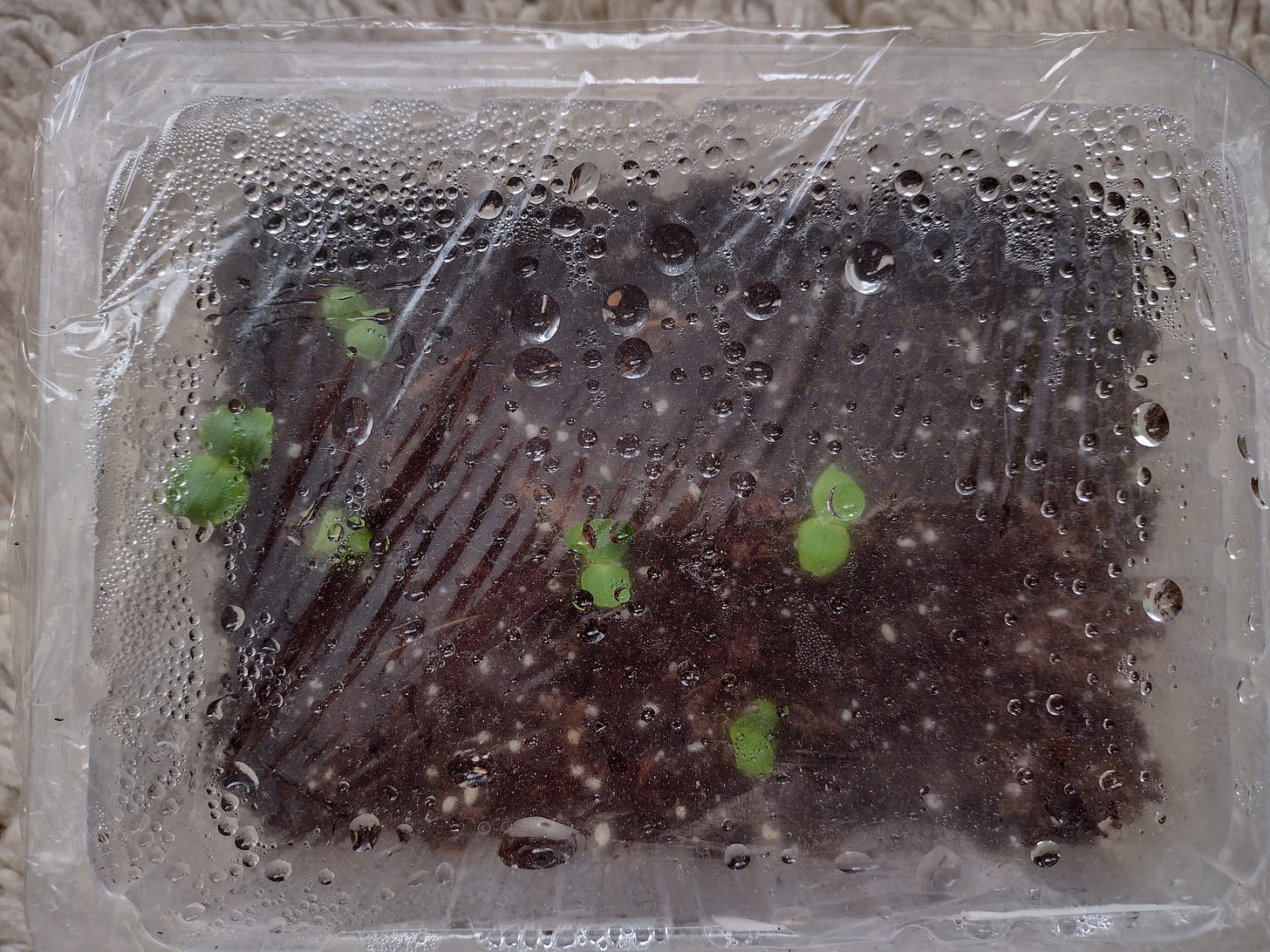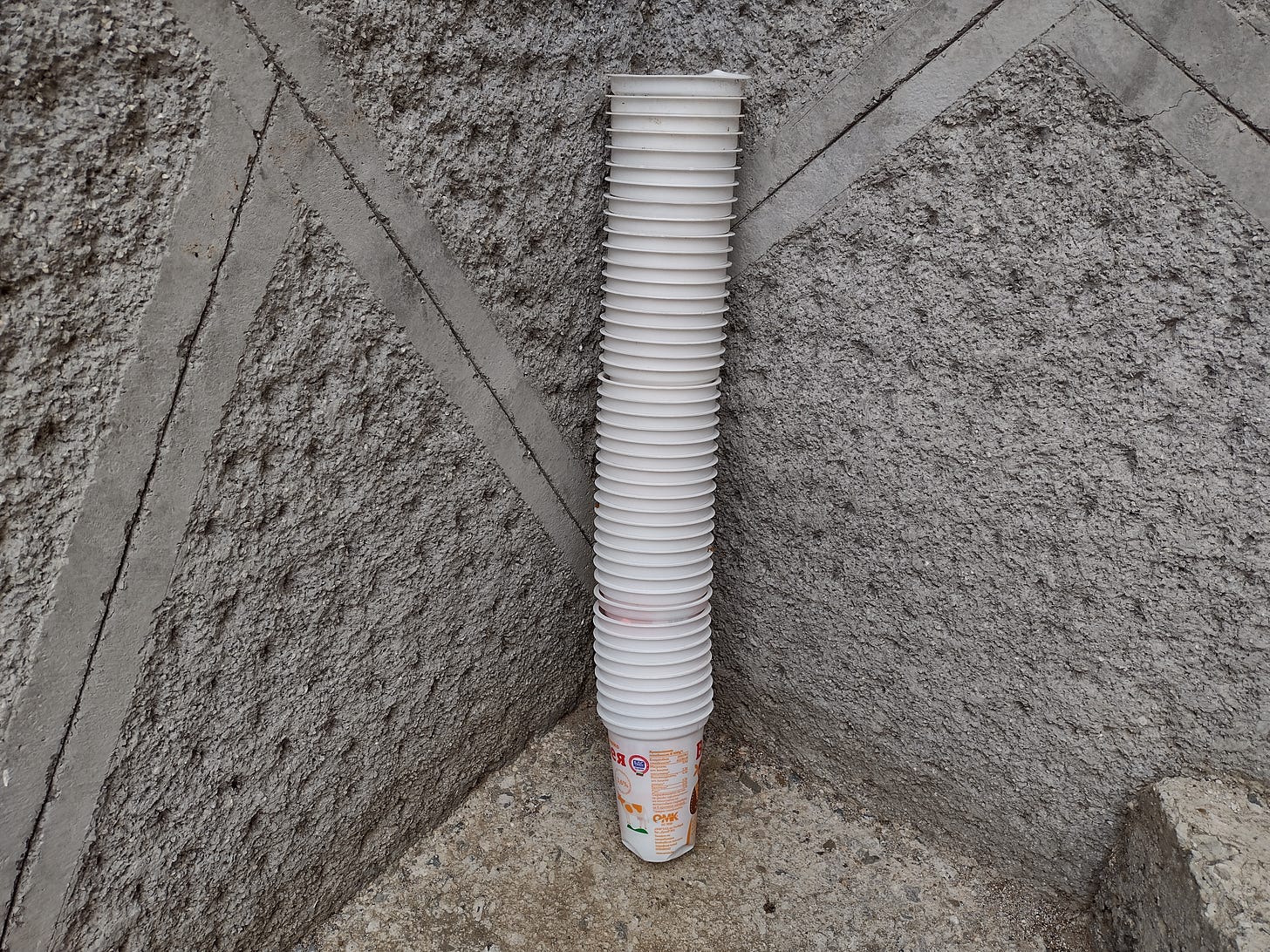This is obviously a misleading headline aimed to grab your attention and make you read the post but now that we have accomplished that goal, we’ll admit we’re not fans of more plastics.
In fact, if it was up to us, we’d ban soft drinks makers from using plastic bottles for their products. We’d make them use glass and then sugar-laden powder-made soft drinks would become expensive and fewer people would drink them, which is good.
They’d have to squeeze an orange or mash a banana, or just eat an apple, outrageous as the idea might be.
Anyway, it may not be within our powers to prescribe to other people how to live their lives but it is fully within our powers to find new uses for plastic that we don’t want to throw out just yet. Because it can really be useful.
Take sowing, for example. Recently, Irina sowed more than 200 radishes. It would have been backbreaking work if it wasn’t for a plastic egg carton pressed into the soil to make dips for the seeds. It works with any seeds that can be sowed so close to each other. Reuse, reuse, reuse, we say. Thanks, Internet.
(The word at the end of the video is “Stop” [the camera]. We couldn’t be bothered to edit the video but we will start, we promise, because we’ll be making more videos.)
Then, after a couple of weeks, you get this:
Sowing aside, there’s the seedling pot issue that comes up every year. This year it became a non-issue because we diligently collected the meat and fish containers that our environmentally conscious supermarket chains sell their products in. By the time sowing started, we had a wide variety of convenient containers. (Pictured here: cucumber seedlings)
What was even better was the accidental revelation about plastic wrap that the chronicler of Slavs in the Garden had while browsing gardening advice online. Put plastic wrap on your seedling container and watch your plants hatch in half the time in this miniature greenhouse. And they did — six days from sowing to sprouting. (Pictured here, baby impatiens)
Once the plants have sprouted, you can start removing the wrap for several hours every day to help them acclimatise gradually. Or, as it happened with our cucumber seeds, you remove the wrap because the plants are tall enough to reach it. Note to self: less soil next time.
All this is great, but the question arises what we are going to do with the incoming containers because we still buy some of our meat and fish from the supermarket chains.
We would admit it’s a bit of an awkward question because the current containers we are using will remain perfectly usable for next year as well, and the year after that, probably, so essentially we would be collecting plastic trash. But who knows — maybe someone will really crack plastics recycling in the next few months and that will be a load off all our shoulders.
In the meantime, we’re also using plastic containers for Stage 2 of the seedling process. Bulgaria is famous for its yogurt and guess what, it comes in plastic containers that happen to be perfect for tomato and cucumber seedlings once they are big enough to be moved and really get growing.
This lot might be enough for the tomatoes but barely. Luckily, Cat can eat yogurt for breakfast, lunch, dinner, and snacks, so we’re in no danger of a shortage. Growing tomato seedlings in yogurt containers is The Traditional Way.
Plastics can also come in handy for marking the presence of a tree that’s too small to notice otherwise. This is dangerous when Cris goes on a grass-cutting spree, so we marked the olive tree and the magnolia with pieces of an old plastic pipe. We stopped short of tying red fabric around the pipes but we were this close.
Cris also has big plans for using the rest of those old pipes as a watering system. Waste not, want not. Plastic doesn’t rot and, in some cases, this is a good thing.
Speaking of watering systems, for about three years our “system” consisted in carrying water from the plastic rainwater tank to the plants that needed watering in plastic bottles. It’s a lot of walking back and forth but it’s really convenient. The army of one-litre beer bottles we used for that purpose were quite an impressive sight next to the water tank and “impressive” here means “irritating but necessary”.
Now that we’ve moved on to the next level of gardening done right and acquired a much larger tank (plastic) we could switch from bottles to a hose (plastic) to water the vegetables in a stress-free, excessive exercise-free manner. We are growing a lot of them this year.








Long live plastic!